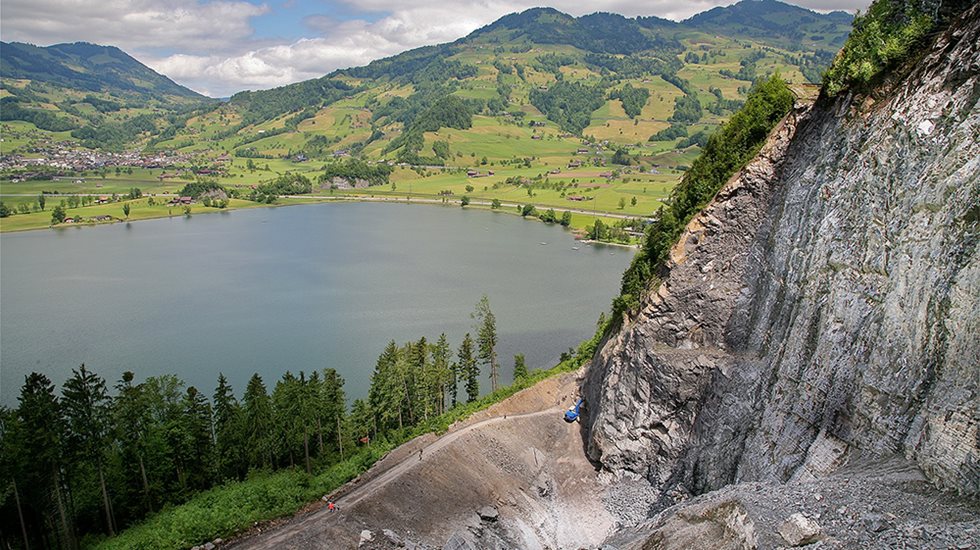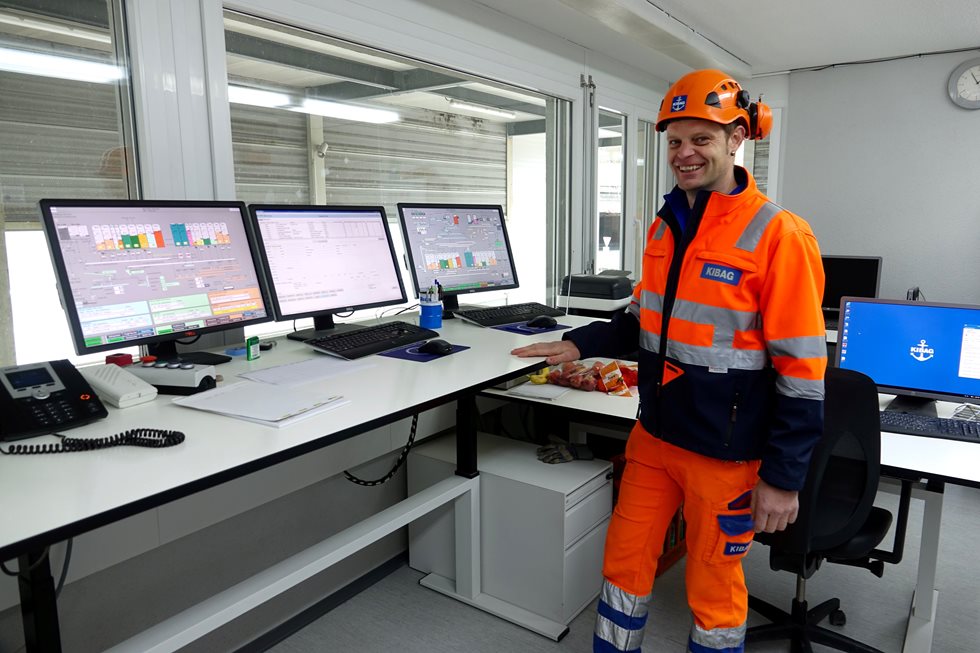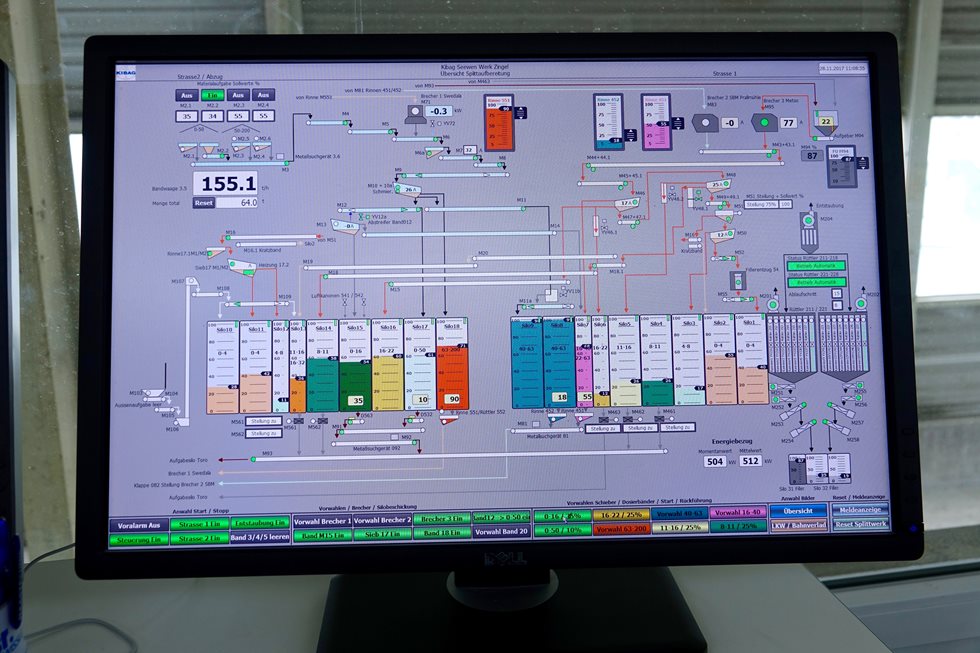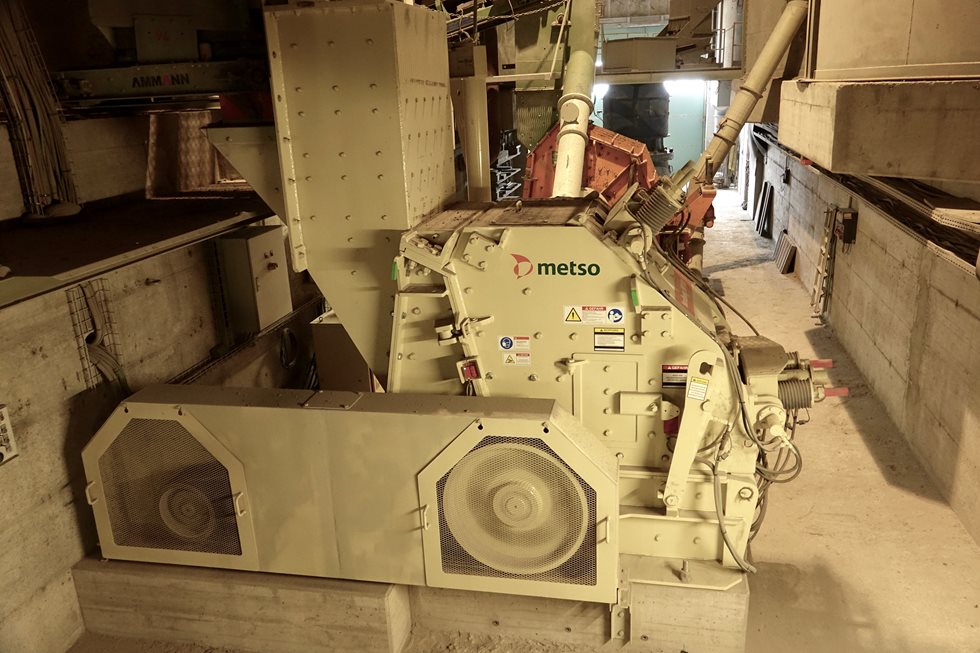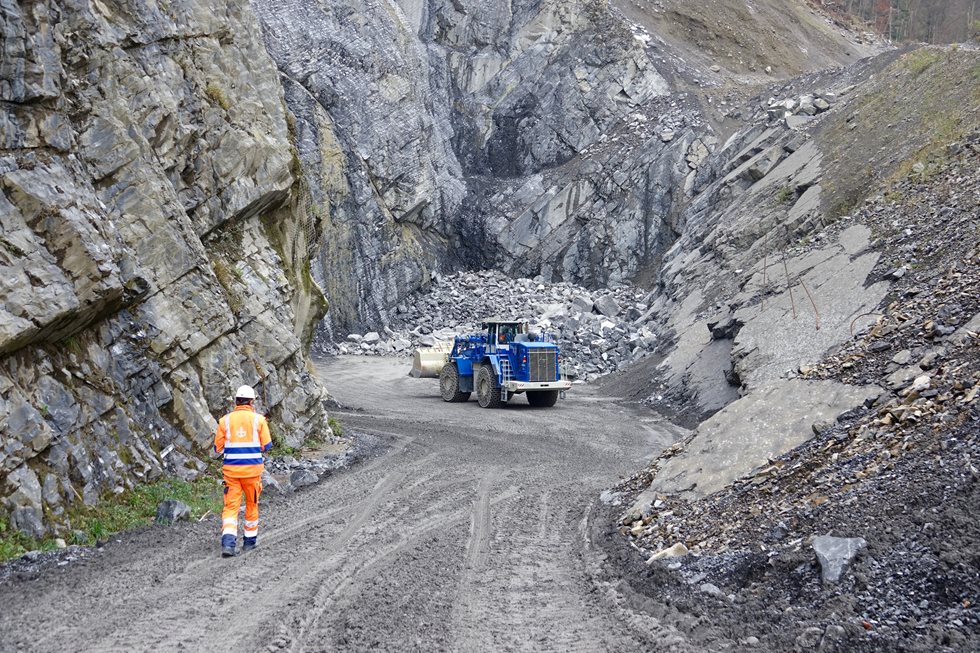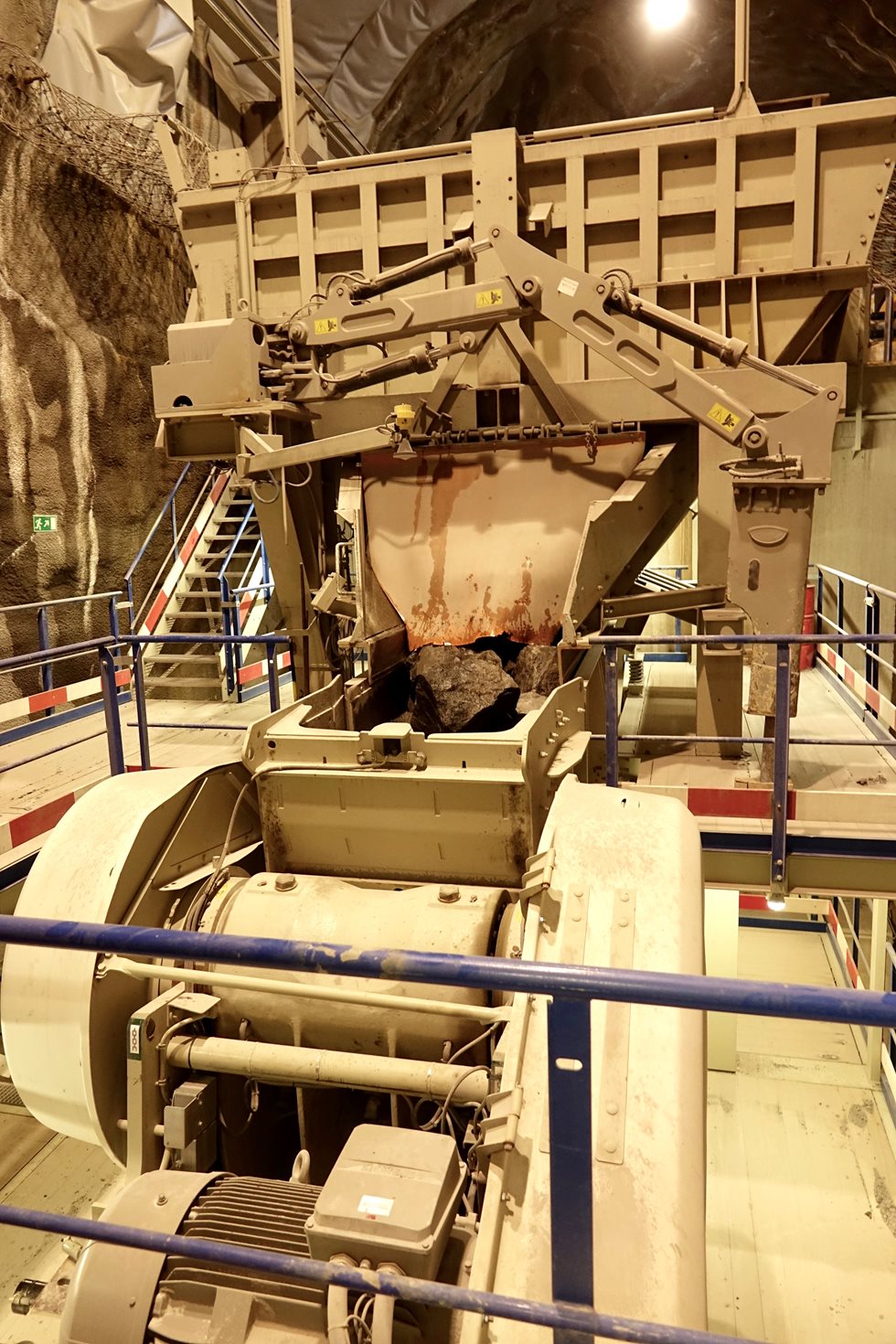The Zingel quarry, situated on Lake Lauerz near the town of Schwyz, has been operated by KIBAG Kies Seewen AG for 40 years. However, hard rock has been quarried there for more than a century. With an annual production volume of just under 300,000 t, the site covers one-tenth of the national demand for high-quality hard rock. Consequently, it assumes an important supply role for the regional construction industry and the Swiss Federal Railways (SBB).
Today the quarry still has licensed reserves of approx. 13 years. At the site, a type of siliceous calcareous limestone is extracted and processed. The material is low-abrasive, but its hardness is rather high (crushability index of 20), which makes it highly demanding on the processing technology that is used. After Drossard Sales & Service GmbH installed a Nordberg® NP1110™ impact crusher in the quarry this year, the productivity of the fine material increased and exceeded all requirements.
